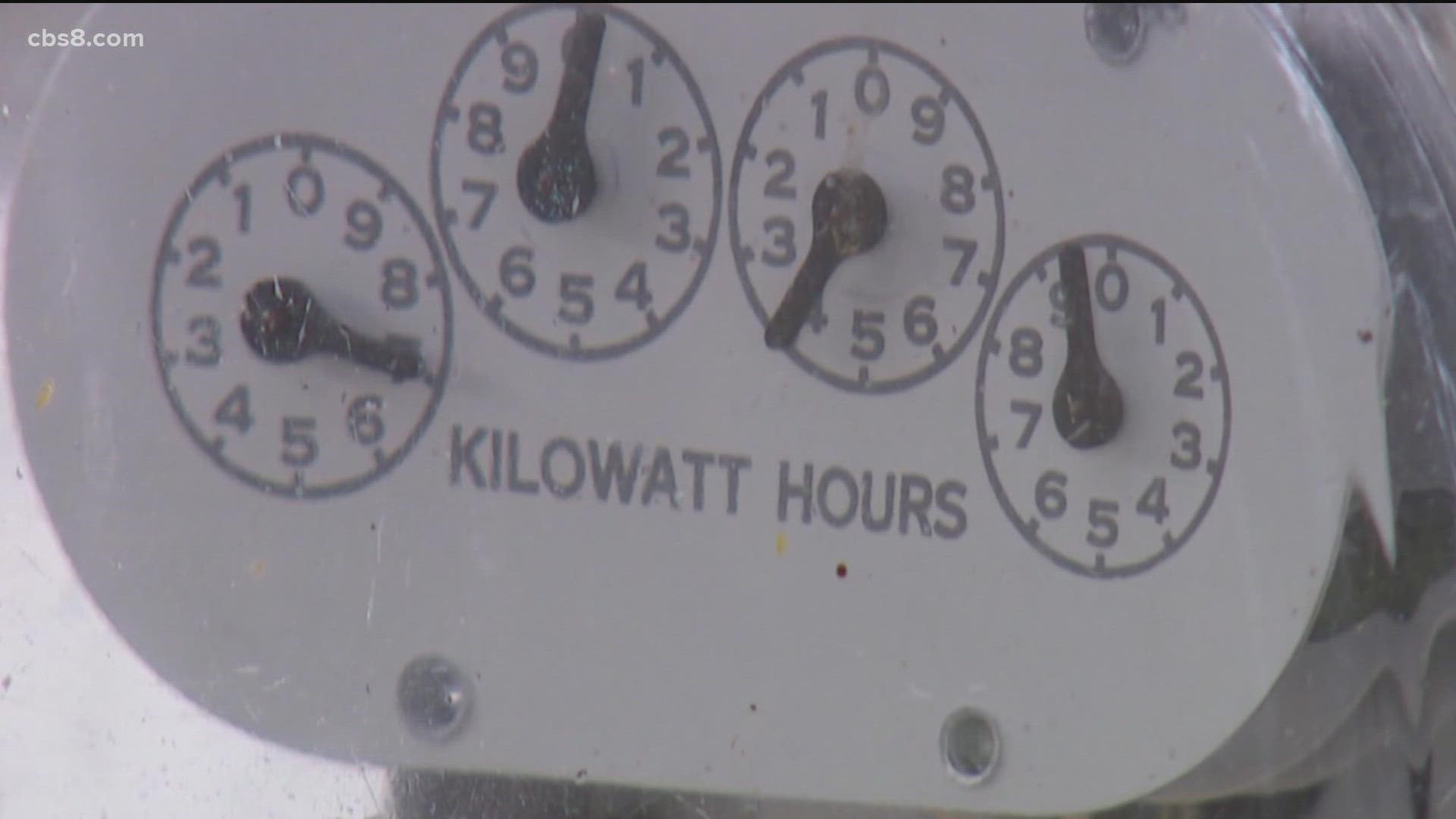SAN DIEGO COUNTY, Calif. — When it comes to your SDG&E bill, there is no one size fits all.
Many of us pay different rates depending on where we live and how much electricity we use.
Q: What is SDG&E’s tier system?
A: It includes tier 1, tier 2, and what's known as a ‘Super Usage Surcharge,’ which is actually the same rate as tier 2.
Q: How does it work?
A: The more energy you use, the more expensive it becomes per kilowatt hour. Your consumption is measured against a baseline set by the California Public Utilities Commission.
Q: What determines your baseline?
A: Your baseline depends on several factors, including time of year and where you live. There are four zones: coastal, inland, mountain or desert.
Any kilowatt hour beyond what your baseline allows is charged at a higher rate.
Here’s an example: A homeowner who lives inland has a baseline of 288 kilowatt hours.
Under tier 1, she can use up to 130% of her baseline at an average rate of 38 cents per kilowatt hour.
Under tier 2, anything between 130 and 399% of her baseline goes up to an average rate of 48 cents per kilowatt hour.
She used 568 kilowatt hours, and therefor was charged the tier 1 rate up until she went above the 130 percent threshold, at which point, she was charged the tier 2 rate for the rest.
Q: Can I change my baseline?
A: No.
Q: What are my options?
A: You can opt into different 'time of use' pricing plans, which charge different amounts per kilowatt hour depending on the time of day you're using energy and how much you're using.
Essentially, it's the customer forecasting their usage. Every SDG&E customer automatically defaults into the 'TOU-DR1 Pricing Plan.'
You can switch at any time, but once you do, you're locked in for one year, unless you have a qualifying event such as buying an electric car.
WATCH RELATED: North County legislator will ask for audit of SDG&E and the CPUC (February 2022)

